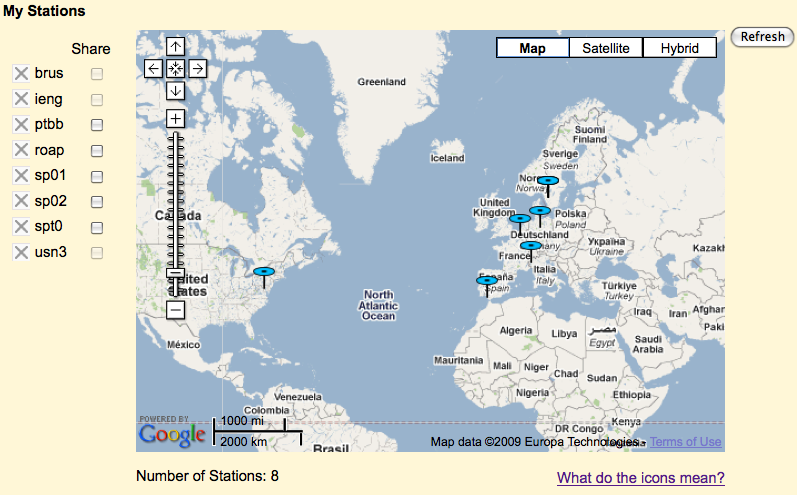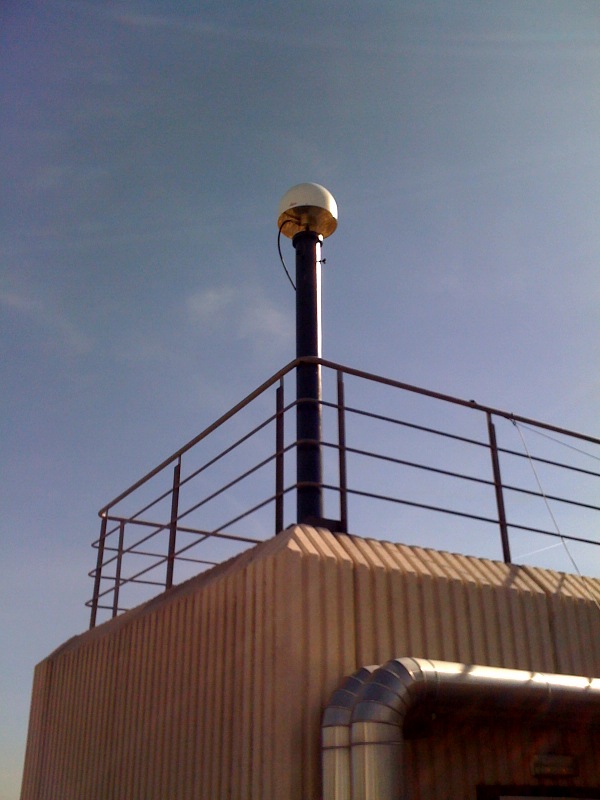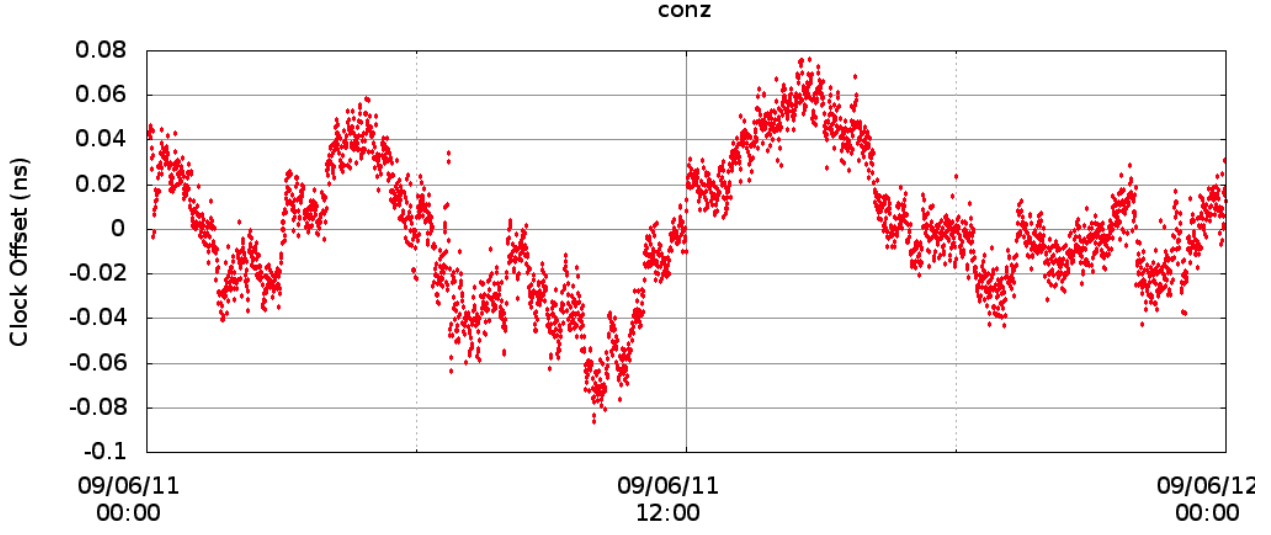November 6th, 2009 by Ricardo Píriz
The Precise Time and Time Interval (PTTI) conference will take place November 16-19 in New Mexico, USA.



GMV and INRiM (the Italian metrological institute) will be presenting a joint paper about how to synchronize a network of master clocks located worldwide and connected to GPS receivers, using the ODTS algorithm in magicGNSS. The PTTI ’09 program is here (see Paper 50, Thursday, Nov 19).
To support the paper and presentation, INRiM and GMV, with the collaboration of other timing labs in Europe and America, have set up an experiment to synchronize eight master clocks via GPS in near-real time. The GPS station names are: brus, ieng, ptbb, roap, sp01, sp02, spt0, and usn3.

The station data (hourly RINEX files) is uploaded every hour onto a dedicated magicGNSS account, and processed in ODTS automatically using the Scheduler. The reference station in ODTS is brus. ODTS processes data in batches of 2 days.
See the results on the Clock Synchronization Experiment for PTTI ’09 web page.
Posted in Announcements, Events | Comments Off on Synchronizing the world’s master clocks with ODTS
November 2nd, 2009 by Ricardo Píriz
Today we have moved the antenna of our gap1 station to a better location. The antenna is now on top of a 2-meter high steel mast on our roof. The new coordinates have been calculated with PPP and updated on the magicGNSS database.
As usual, the station is public in magicGNSS, and the raw data can be found here (the file names are examples):
ftp://ftp.gmv.es/incoming/GAP1306P.09d.gz
ftp://ftp.gmv.es/incoming/GAP1306P.09n.gz



Posted in Announcements | Comments Off on New location for our gap1 station antenna
October 21st, 2009 by Ricardo Píriz
With the latest version of magicGNSS (1.4), and if you have a *pro* account, you will be able to automate your station data processing in ODTS or PPP, using the new Scheduler. This is how the Scheduler settings look like:

Just select the algorithm you want to automate (ODTS or PPP). Previously you should have run an ODTS or PPP scenario to be used as template by the Scheduler. Every time it runs, the Scheduler reads the scenario Duration, the list of Stations, and the Settings, from the template scenario. Make sure your template scenario is properly configured! Read the rest of this entry »
Posted in Announcements, Help, Tips & Tricks | Comments Off on Automating data processing with the Scheduler
October 5th, 2009 by Ricardo Píriz
Starting on GPS Week 1406 (Dec 17, 2006), the International GNSS Service (IGS) publishes final GPS satellite clocks at a rate of 30 seconds, in addition to the usual 5-minute rate. These high-rate satellite clocks are very useful for Precise Point Positioning (PPP), the algorithm in magicGNSS that processes stand-alone station data to calculate the station position, clock, and tropo delay.
Using 30-sec satellite clocks as input for PPP, one can choose a 30-sec station data rate without having to interpolate the input satellite clock values. magicGNSS supports 30-sec and 5-min data rates in PPP. As from today, if you select a 30-sec data rate in PPP and final 30-sec satellite clocks are available from IGS, they will be used instead of 5-min clocks. Remember that IGS final products have a latency of 2 to 3 weeks.
Until now if you selected a 30-sec data rate in PPP, the input 5-min clocks from IGS had to be interpolated. Clock interpolation is a bad thing because the interpolated values do not reflect the true satellite clock behavior at the interpolation epochs. The following figures show the effect of clock interpolation on the CONZ clock estimation from PPP:

5-min station clock from PPP (no interpolation)

30-sec station clock from PPP (interpolation, WRONG!)

30-sec station clock from PPP (no interpolation)
Posted in Announcements, Help | Comments Off on About satellite clock interpolation
September 24th, 2009 by Ricardo Píriz
We have just presented our paper Orbits and Clocks for GLONASS Precise-Point-Positioning at the ION GNSS 2009 conference in Savannah, Georgia, USA (Session E3: PPP and Network-Based RTK 1, Thursday morning, September 24). The presentation is here, and the paper is here.
And this is a snapshot from out trip to Savannah:

Posted in Announcements, Events | Comments Off on Presentation at ION GNSS 2009















